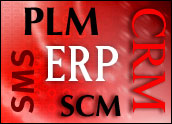
It seems almost quaint, looking back on it, that a few years ago one of the big questions on nearly everyone’s mind was how to commercialize cyberspace. For the most part, that got figured out, though new iterations continue. In an interesting twist, some companies are now using the Web to bring a form of democracy to commercial interactions. Today, however, commercialization is not the issue. At long last, it’s the customer companies are most interested in — and not a moment too soon.
Last week I wrote about a book called The Support Economy whose authors, Zuboff and Maxmin, call for a new business model — what they call the “next episode of capitalism” — in which vendors solicit customer input to a far greater degree than they do today. The authors say that input will be used to help vendors develop products and services that people really want to purchase, rather than elaborate attempts to sell what the mass production machine has already made.
Capturing the Voice of the Customer
While I agree with this direction, the book’s authors also imply that the business processes we use today for customer relationship management will either change a great deal or be totally replaced by new processes. Of course, there will always be a place for “conventional” CRM — those systems of record that capture important customer demographic, transaction and service information — and I can’t imagine those systems looking or acting much different from the current batch of systems. At the same time, though, capturing the voice of the customer as a business process is going to require a different approach to application software.
One reason why I like working with emerging companies so much is that they really are the laboratory where new ideas are tested and first commercialized. They are wonderful examples of how the free market works best.
For example, the idea of capturing the voice of the customer has been around for several years. Back in 2001, my colleague Harry Watkins began researching the subject and gave a strong push to the terminology. Watkins found many examples of companies that had independently decided there might be a market for applications that captured customer input. Over the last few years, companies with a vision of capturing the voice of the customer have been garnering and nurturing their first customers, managing their cash and building their businesses.
Web-Necessary Applications
What’s interesting to me about all of this, aside from capturing customer feedback, is that many of these startup companies have independently settled on a technology model that pushes the application hosting paradigm even further. I call this new paradigm “Web-Necessary” to distinguish these applications from “Web-Friendly” applications that essentially use the Internet as a transport medium.
Web-Necessary applications can be very different from one another in terms of the business processes they support, but they share three important characteristics:
- They involve the Internet as an active part of the value proposition.
- They support innovative business processes that in most cases could not be easily supported any other way.
- They are collaborative, bringing together people from disparate roles, geographies and organizations to participate in business processes.
As it turns out, the Web-Necessary model is ideal for capturing the voice of the customer, but it’s also a great way to deliver services. Whether one wants to conduct a survey, run a focus group, keep tabs on an indirect sales channel or perform any of a number of other activities that require a degree of multiple input and information exchange, the Web-Necessary application model is a good fit.
Increasingly, people who care about capturing the voice of the customer tell me that, rather than automating people out of the business process, Web-Necessary applications enable organizations to bring the right talents to bear in support of the customer — and that means in sales and marketing, not simple customer-service “support.” Those talents might come from inside an organization or outside of it. Because customers and outside talent can live and work anywhere, Web-Necessary applications’ ability to capture information asynchronously can be a big plus.
Beyond Benevolent Dictatorship
But capturing the voice of the customer is only a subset of what Web-Necessary applications can do. Once a customer need is discovered, the Web-Necessary model is an ideal forum for assisting customers. Web-Necessary applications also open up new business opportunities, especially those that can be categorized as “business service provider” or “business process optimization” oriented.
To my mind, this is an exciting development. Capturing the voice of the customer will bring an element of democracy to a vendor-consumer relationship that has for too long looked a lot like a benevolent dictatorship. And the Web-Necessary platform provides an efficient and cost-effective means for delivering services and products.
For the first time since the days of the general store, the Web-Necessary paradigm will ensure there will be someone on the other side of the conversation who will mean it when they ask, “Can I help you?”
Denis Pombriant is former vice president and managing director of Aberdeen Group’s CRM practice and founder and managing principal of Beagle Research Group. In 2003, CRM Magazine named Pombriant one of the most influential executives in the CRM industry.














































Denis…spot-on, as usual. CRM will continue to be challenged as long as sales organizations (and the software/services vendors who supply them) view customers as entities that are on the other side of the wall. Sales, marketing, product marketing, et al, need to get out there, sit down with customers and prospects and *listen*.